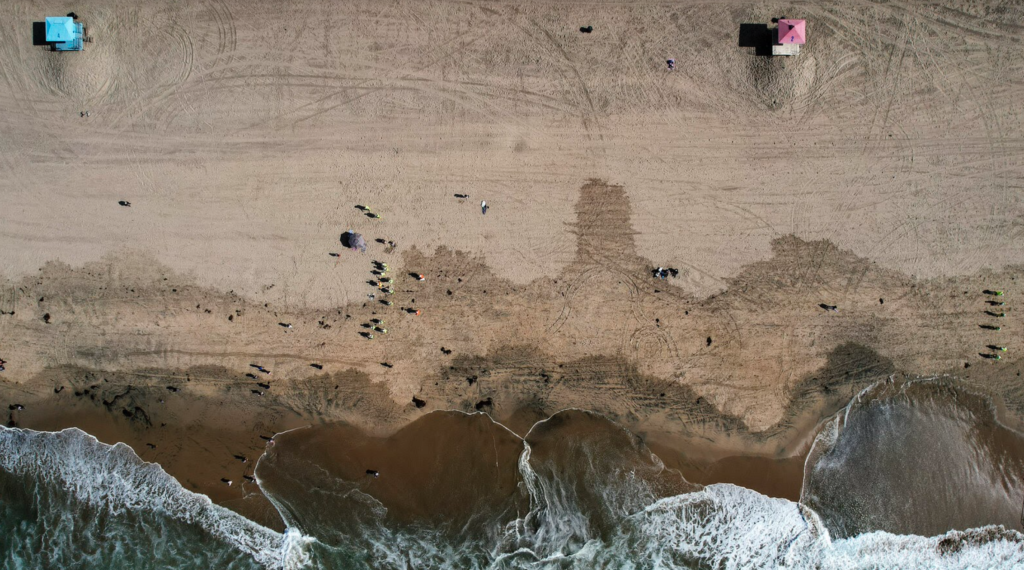Huntington Beach environment threatened with 126,000-gallon oil spill
From Oct. 2 to Oct. 3, an oil spill five miles off the coast of Huntington Beach in Southern California leaked 126,000 gallons of oil into the Pacific Ocean. A removal effort is underway to repair the damage to local ecosystems, including the Talbert Marsh nature reserve; however, the cause of the spill is still unclear.
Amplify Energy is the company that owns the oil pipeline. On Saturday, October 2, Amplify workers reported the spill to the Coast Guard, but residents could smell tar the day before the report was released. On Oct. 3, divers appeared to fix the leak, and removal efforts began.
The Coast Guard reports that the spill covers 13 square miles. “I would characterize the oil as isolated ribbons or patches of oil. It does cover several miles, and that is constantly changing,” said Capt. Rebecca Ore. The dark oil is described as reaching the coast in clumps and rings.
This month’s spill is not unprecedented for Huntington Beach. In 1990, a spill released 417,000 gallons, and in 2015, another leaked 143,000 gallons.
The pipeline involved in October’s spill is 17.5 miles long and is connected to three oil platforms that sit above the Beta Field oil reservoir. Elly, one of the oil platforms, processes the oil from the Ellen and Eureka platforms.
Martyn Willsher, CEO of Amplify Energy, said, “We’ve seen a spot that we think very likely could be the source (of the leak).” However, the spill’s cause is not confirmed and the size and duration of the leak is also unclear.
Orange County supervisor Katrina Foley said, “We need answers and the public deserves answers…This has devastated our California coastline in Orange County, and it’s having a tremendous impact on our ecological preserves as well as our economics.”
Back at the beach, cleanup crews and volunteers worked to remove as much of the oil from the shoreline as possible. Around 2000 feet of floating barriers called booms were stationed to block the oil and prevent it from moving further into marshlands. Nevertheless, oil still seeped in, leaving a visible sheen on the water. In addition, getting rid of oil from contaminated soil and water is not an easy task, and experts say that it can take years for oil damage to be completely removed.
However, after only a week, Huntington Beach officials decided to reopen the beach on Monday, October 11. “We understand the importance of our beaches to tourism, the economy, and the overall livelihood here in Huntington Beach,” Huntington Beach Mayor Kim Carr said, “It is important that our decision to reopen the coastline and water is data-based and that we continue to monitor water quality.” This decision came after tests showed there were undetectable traces of oil toxins in the water.
Though the beach was able to reopen quickly, experts warn that this incident won’t be the last. Miyoko Sakashita, director of the Oceans department of the Center for Biological Diversity said, “This oil spill is a tragic reminder that offshore drilling is a devastating threat to our coast and its wildlife. Even after fines and criminal charges, the oil industry is still spilling and leaking into California’s coastal waters because these companies just aren’t capable of operating safely.”


